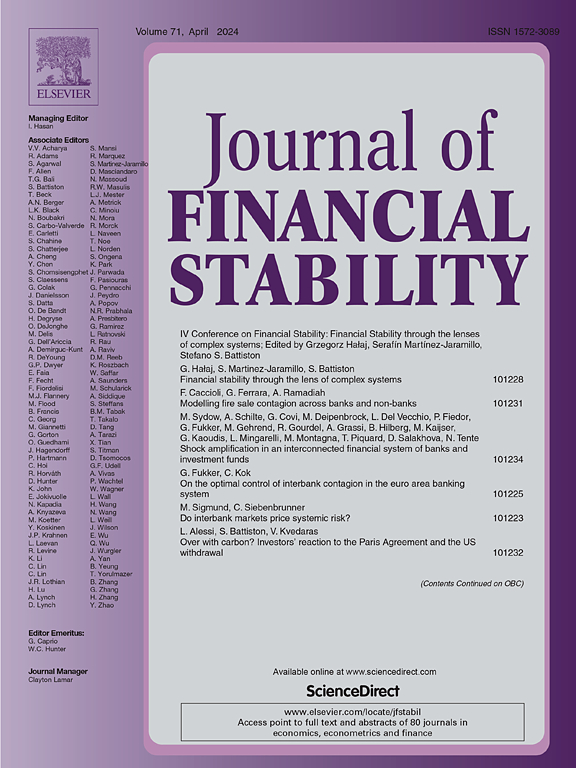政府反复注资是否有助于金融稳定?新兴市场的证据
IF 4.2
2区 经济学
Q1 BUSINESS, FINANCE
引用次数: 0
摘要
在美国和其他发达市场,政府主导的银行注资通常是在外部冲击或危机事件发生时进行的,而印度则是一个独特的环境,每年都会注入大量资本,以稳定政府拥有的公共部门银行薄弱的资产负债表。由于政府干预及时,这种 "重复 "的资本注入既可以更好地促进金融稳定,也可以因可能存在的道德风险问题而造成不稳定。"这种重复的政府资本注入是否会降低银行的金融风险并提高金融稳定性?我们通过印度市场的资本注入情况来揭示这个问题。基于 2008-18 年期间政府向公共部门银行注资的详尽样本,我们发现了有力的证据,表明注资与注资后违约、资本缺口和网络风险的经济显著上升相关,这表明存在道德风险问题,即接受注资的银行可能会承担更高的投资风险。本文章由计算机程序翻译,如有差异,请以英文原文为准。
Do repeated government infusions help financial stability? Evidence from an emerging market
While government led bank capital infusions in US and other developed markets have been usually contingent an external shock or crisis episode, India presents a unique setting where significant capital infusions happen annually to stabilize the weak balance sheets of undercapitalized government owned public sector banks. Such “repeated” capital infusions can either better engender financial stability, given the timely government interventions; or create instability arising from possible moral hazard concerns. "Do such repeated government capital infusions lower banks’ financial risks and improve financial stability?” We shed light on the question through the lens of capital infusions in the Indian market. Based on the exhaustive sample of government capital infusions into public sector banks for the period 2008–18, we find robust evidence that capital infusions are associated with economically significant higher default, capital shortfall and network risks post-infusion, signaling a moral hazard problem, where treated banks may assume more risky investments.
求助全文
通过发布文献求助,成功后即可免费获取论文全文。
去求助
来源期刊

Journal of Financial Stability
Multiple-
CiteScore
7.70
自引率
9.30%
发文量
78
审稿时长
34 days
期刊介绍:
The Journal of Financial Stability provides an international forum for rigorous theoretical and empirical macro and micro economic and financial analysis of the causes, management, resolution and preventions of financial crises, including banking, securities market, payments and currency crises. The primary focus is on applied research that would be useful in affecting public policy with respect to financial stability. Thus, the Journal seeks to promote interaction among researchers, policy-makers and practitioners to identify potential risks to financial stability and develop means for preventing, mitigating or managing these risks both within and across countries.
 求助内容:
求助内容: 应助结果提醒方式:
应助结果提醒方式:


